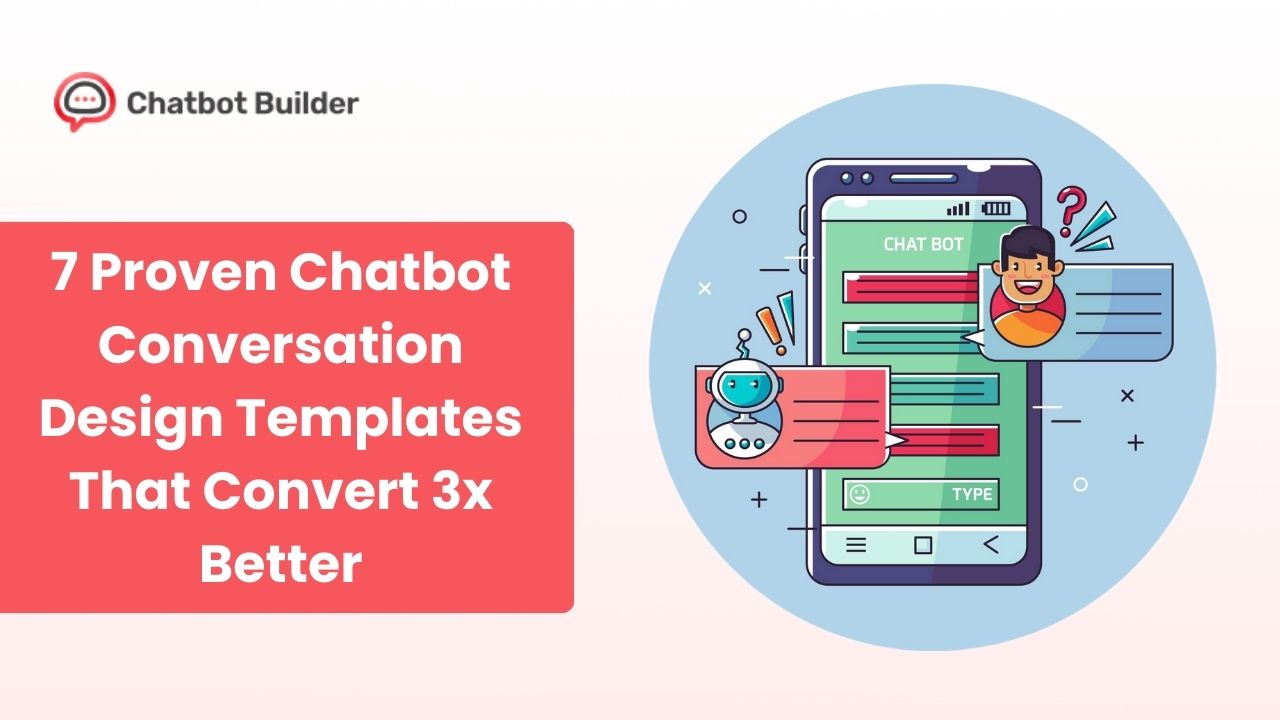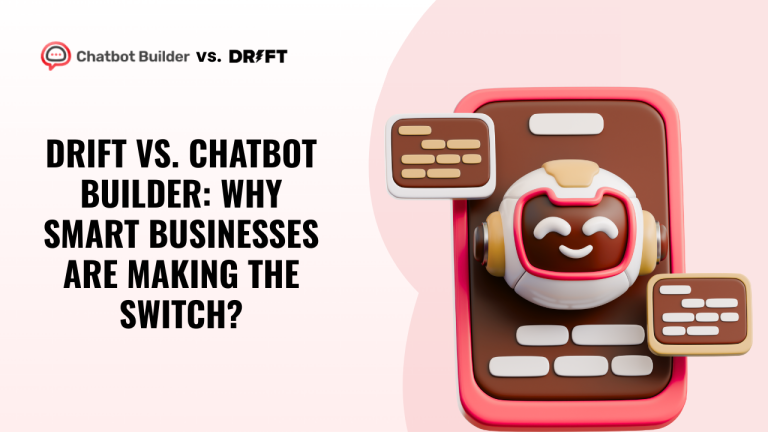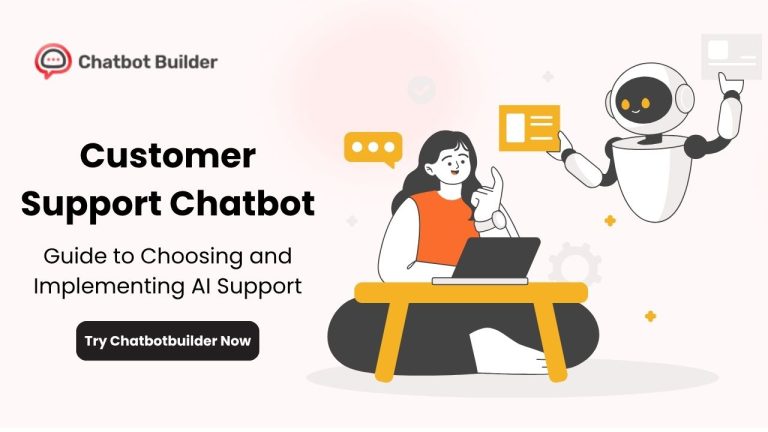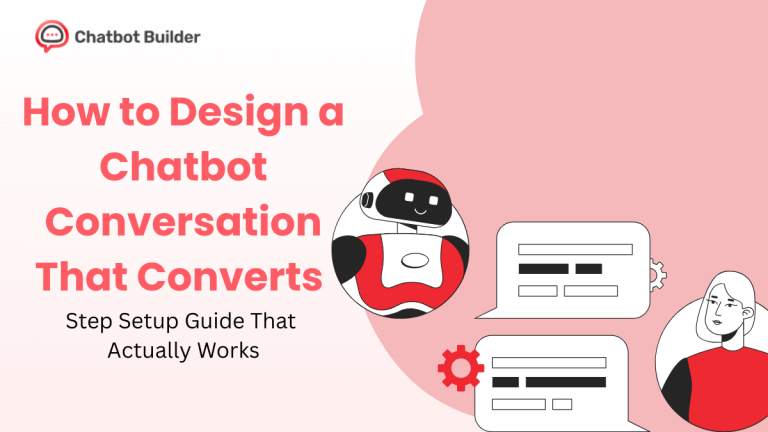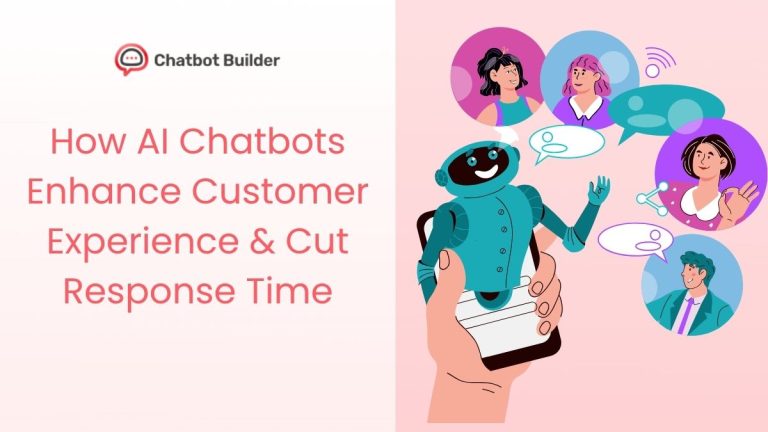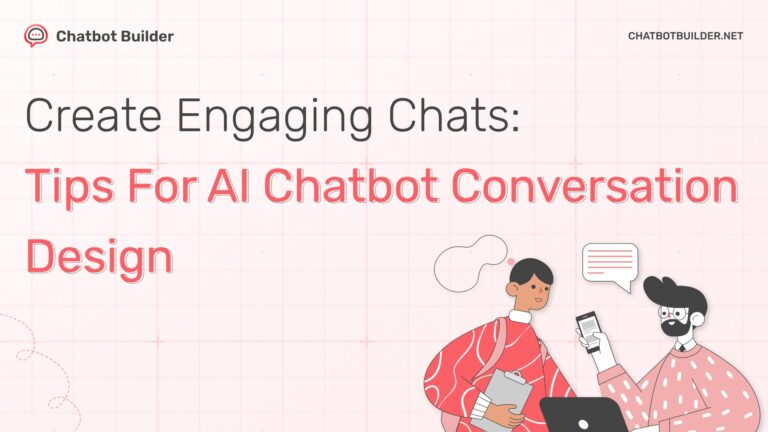Want to create chatbots that assist rather than infuriate? Your chatbot builder conversation flow makes or breaks user experience. Most companies receive 23% greater engagement when they get their chatbot conversation design right from day one.
Imagine this: You’ve spent weeks crafting what you believe is the ultimate chatbot. The user interface is fancy, the answers are zippy, and the underlying technology would run a small spaceship. But when actual users try to talk to it, they become frustrated, befuddled, and drop out of the conversation quicker than you can say “artificial intelligence.”
Recognize the scenario? You’re not alone.
What separates chatbots that gather digital dust from chatbots that become essential tools is one essential component: chatbot conversation design. Not the flashy AI algorithms or the sophisticated natural language processing – the simple art of crafting conversations that feel natural, helpful, and dare I say it, human.
Why Most Chatbot Builder Conversation Flows Fall Flat
Here’s what nobody tells you about chatbot conversation design: users don’t care about your technology stack. They want to have their issue resolved without having to toss their phone against the wall.
The majority of chatbots are unsuccessful because their developers think about what the bot is capable of rather than what users need to achieve. The result? Chatbot builder conversation flows that resemble trying to make your way through a 1995-style phone tree.
Consider the last time you had a good conversation with a human customer support agent. They likely:
- Asked clarifying questions when confused
- Remembered what you told them earlier
- Offered multiple options when appropriate
- Knew when to escalate to a specialist
- Made you feel heard and understood
Your chatbot conversation design should do the same.
The Foundation: Understanding User Intent for Better Chatbot Builder Conversation Templates
Before you write a single line of dialogue, map out what your users actually want. Not what you think they want – what they actually want.
Begin by reviewing your current customer support tickets, FAQ pages, and user comments. Search for patterns. Have you noticed which questions come up again and again? Often, it’s the same problems that cause the most frustration. And when it comes to information, users usually have a few urgent needs.
Create user personas, but make them specific. Rather than “busy professional,” consider “marketing manager getting lead capture forms set up at lunchtime because the CEO needs a demo tomorrow morning.”
The more precise your understanding, the more effective your chatbot builder conversation flow will meet actual needs.
Creating Natural Patterns of Conversation through Chatbot Conversation Design
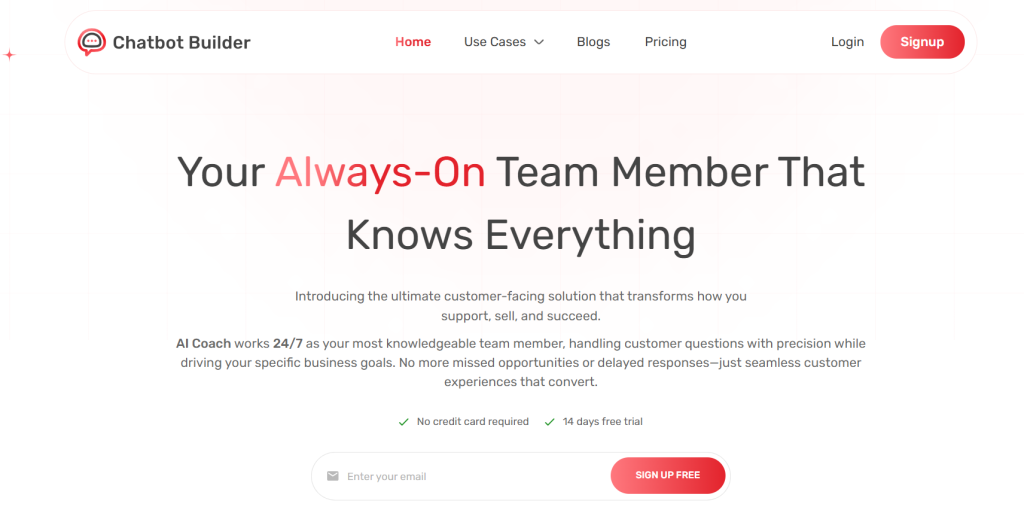
True conversations are not scripted. They adapt, branch, and sometimes circle back. Your chatbot builder conversation templates should mirror this natural flow.
Begin with context, not commands. Replace “How can I help you?” with “I see you’re reading our pricing page. Are you trying to determine which plan best suits your team size?”
Employ progressive disclosure in your design of a chatbot conversation. Don’t overwhelm users with all options initially. Begin with broad choices and then refine based on their input. It’s like peeling an onion – expose layers at a time.
Build escape routes. At all times, users must have the ability to start over, rewind, or speak to someone human. Put these options in place but not in an overwhelming manner in your chatbot builder conversation flow.
Prepare for the unexpected. Users will utter things you never expected. Design fallback responses that let them know they’ve confused you and redirect them to their path without making them feel daft.
Crafting Chatbot Builder Conversation Templates That Actually Help
Your personality in your chatbot will be consistent with your brand, but primarily, consistent with your users’ expectations and mood.
The person asking about a refund policy is likely to be irked. Your chatbot conversation design tone should be understanding and solution-focused, not cheerful and chatty.
Someone exploring your features for the first time might be curious but overwhelmed. Your chatbot builder conversation templates should be encouraging and educational without being condescending.
Keep responses scannable. Use line breaks, bullet points when necessary, and eschew walls of text. Keep in mind – often, people are multitasking when they communicate with chatbots.
Pro tip: Read your bot responses out loud. If they sound awkward when spoken, they’ll feel awkward when read.
Testing Your Chatbot Builder Conversation Flow: The Never-Ending Story
Here’s where ChatbotBuilder.net really shines – the ability to test and refine your chatbot conversation design without rebuilding everything from scratch.
Set up A/B tests for different chatbot builder conversation templates. Try variations in:
- Opening messages
- Question phrasing
- Response options
- Handoff triggers
Track metrics that matter: conversation completion rates, user satisfaction scores, and task success rates. But also pay attention to qualitative feedback. Sometimes a technically “successful” chatbot builder conversation flow still leaves users frustrated.
Create feedback loops within your conversations. Brief thumbs up/down scores or instant “Was this helpful?” questions can yield great feedback for your chatbot conversation design.
Advanced Chatbot Conversation Design Techniques
After you’ve got the hang of the fundamentals of chatbot builder conversation flow, here are some advanced methods to try:
Contextual memory: Your bot should remember information from earlier in the conversation. If someone mentions they’re a small business owner, don’t ask about enterprise features three messages later.
Smart routing in chatbot builder conversation templates: Use the information gathered in conversation to route users to the most relevant human agent or resource, complete with context about what’s already been discussed.
Proactive suggestions: Based on conversation history and user behavior, offer relevant next steps or related information they might need.
Graceful degradation: When the bot hits its limit, switch to human support seamlessly with a full conversation recap.
Typical Errors in Chatbot Conversation Design to Steer Clear Of
The “one-size-fits-all” pitfall: Users have varying communication styles. Some require fast answers, while others require extensive explanations. Design multiple chatbot builder conversation templates to accommodate different styles.
Over-automation: Not all interactions must be completely automated. At times the best user experience requires a swift transfer to a human who can resolve the issue more efficiently than any chatbot builder dialogue flow.
Disregarding mobile users: Chatbot interactions often occur on mobile platforms. Don’t forget this when creating chatbot conversation design and response choices.
Forgetting accessibility: Screen readers, voice commands, and other assistive technologies must work flawlessly with your chatbot.
Making Your Chatbot Builder Conversation Templates Measurable
What gets measured gets improved. Track these key metrics for your chatbot conversation design:
- Conversation completion rate: How frequently do users complete their intended goal?
- Message-to-resolution ratio: How many back-and-forth messages are required to assist someone?
- Escalation rate: How frequently must the bot escalate to human intervention?
- User satisfaction scores: Direct feedback from users about their experience
- Return usage: Do people come back to use the bot again?
Set benchmarks and improvement targets. A 10% increase in completion rate might represent hundreds of successfully helped users through better chatbot builder conversation flow.
ChatbotBuilder.net: Best Practices for Conversation Design
When building flows in ChatbotBuilder.net, structure matters for your chatbot conversation design. Structure your conversation trees sensibly with good naming conventions. Your future self (and all others developing the bot) will appreciate it.
Utilize the native analytics within the platform to determine where users tend to drop off or get stuck in your chatbot builder conversation templates. These points of friction are goldmines for improvement opportunities.
Leverage integrations to import real-time information. There is no impression better than that of a Chatbot aware of their account balance or order history without inquiring.
Save and version your chatbot builder conversation templates. When you discover good patterns, make them reusable pieces for use in later bots.
The Future of Chatbot Conversation Design
Chatbot conversation design is not a set-it-and-forget-it activity. User expectations shift, your business grows, and new interaction patterns arise.
Remain curious about the way people converse. Observe how texting, social media, and voice assistants influence user expectations. What feels natural in chatbot builder conversation flow is constantly shifting.
The goal isn’t to create the most advanced chatbot – it’s to create the most helpful one. Sometimes that means keeping your chatbot builder conversation templates simple. Occasionally it is about understanding how to step out of the way and provide people with access to humans who can assist.
Your chatbot conversation design should feel less like talking to a machine and more like talking with your most resourceful, knowledgeable assistant. The one who always has just the right idea about what you need and how to make it happen.
That’s the real magic of a great chatbot builder for sales. Not the technology behind it, but the human problems it solves.
Frequently Asked Questions About Chatbot Conversation Design
Good chatbot conversation design includes clear user paths, natural language patterns, contextual responses, and easy escalation to human support when needed.
Start with user research, map common conversation flows, use progressive disclosure, and test different response variations to optimize your chatbot builder conversation templates.
Use a tree structure with clear branches, fallback options, memory of previous responses, and multiple paths to reach the same goal.
Review your chatbot conversation design monthly, analyze user feedback weekly, and make small improvements continuously based on performance data and user behavior.
Yes, ChatbotBuilder.net supports advanced chatbot builder conversation flow features including conditional logic, integrations, analytics, and multi-path conversations for complex use cases.
Monitor completion rates, user satisfaction scores, conversation length, escalation rates, and return usage to measure your chatbot builder conversation templates effectiveness.
Design clear exit paths, use conversation counters, provide “start over” options, and include human handoff triggers in your chatbot conversation design.







